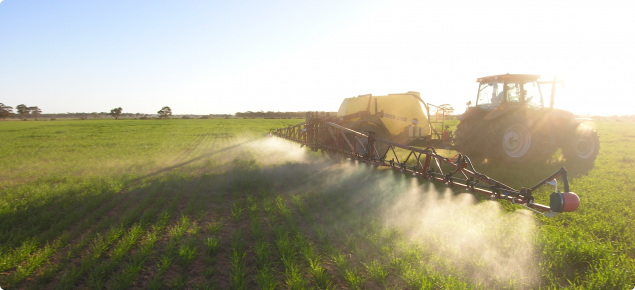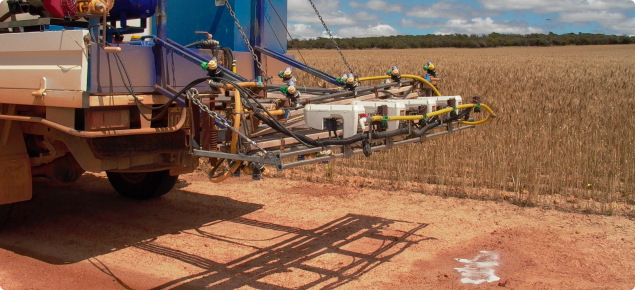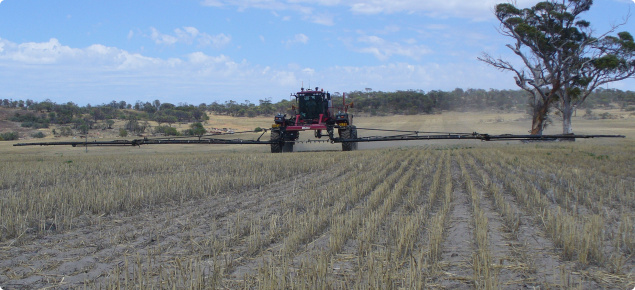Herbicide application methods
Boom sprayer
A boom sprayer is the most common type of apparatus for applying herbicides in broadscale farming. A sprayer has many components, the most important being the nozzles, which split the herbicide into many small droplets that are projected through the air to the target. The nozzle is the only component of the sprayer that directly determines the effectiveness of spraying. All other components are necessary to position the nozzles and provide them with a continuous supply of herbicide at the correct pressure. Correct nozzle selection and operation are critical for successful spraying.
Misters
Misters are a useful but imprecise way of applying herbicides to large areas quickly. They rely on wind to drift the herbicide. If the wind is too light or the spraying speed too high, the swath width will decrease, possibly causing overdosing and wasted chemical. If the wind is too strong or gusty, it increases the swath width, which will reduce the chemical application rate and increase the risk of damage from spray drift.
Blanket wipers
Blanket wipers are made of a vertical strip of material attached to a horizontal frame. The vertical strip, or blanket, acts as the wiping surface making direct contact with the target weed. This equipment has been developed as an alternative to rope wick applicators. A non-selective herbicide is generally used with successful weed control dependant on the height differential between crop and weed. Wipers are used in broadacre application to control radish or mustard in lupins or chickpeas or to 'top' grasses in pasture. Units have been designed to fit all terrain bikes and hand held equipment has been developed for back yard and environmental use to treat weeds such as cape tulip, Paterson’s curse, Guildford grass, arum lily, fressia and bracken fern. Herbicide can be selectively applied to these plants without damaging pasture legumes or native seedlings in revegetation areas. The best time to wipe weeds in crops is September to early October when the weeds are flowering and are 20–30cm taller than crop or pasture plants.
Rope wick applicators
Rope wick applicators consist of a series of ropes impregnated with a non-selective herbicide, usually glyphosate. They are not widely used, but they can be useful for the control of tall weeds in a crop or pasture. Normal spraying with a non-selective herbicide would not be possible in this situation, however a rope wick applicator can be moved above the crop or pasture and wipe the herbicide only onto the taller weeds, hence selective control is obtained. This technique has been partially successful for controlling cape tulip, docks, rushes, thistles and bracken in pasture. Because they can only operate at slow speeds and the ropes are very expensive, rope wick applicators have not gained wide acceptance.
Detection technology
Detection technology (for example, Weedseeker and Weedit) uses infrared and near infrared light to detect green weeds and sprays only green plants in paddocks. In action, light-emitting diodes (LEDs) point two different light sources, infrared and near infrared, towards the ground. Green weeds have a different reflective signature to stubble or soil. The system can operate at speeds up to 20 kilometres per hour (km/h), requiring a stable boom to aid operational efficiency.



